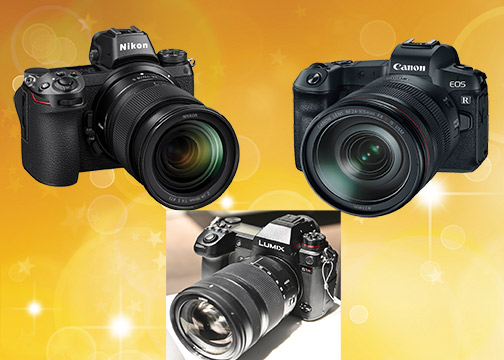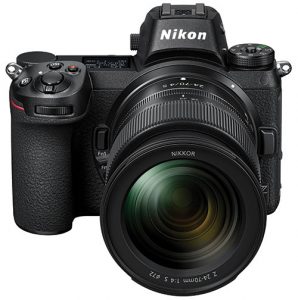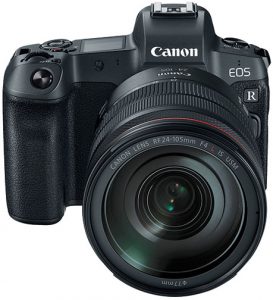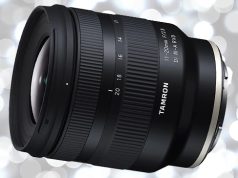
Canon and Nikon, longtime proponents of the DSLR, recently released their first high-performance, full-frame mirrorless system cameras. Moreover, Panasonic, creator of the world’s first Micro Four Thirds-format DSLR-style mirrorless camera (the 2008 Lumix DMC-G1), unveiled a brace of advanced, high-spec full-frame mirrorless models at photokina in the fall.
Up until now, Sony has been the dominant force in the full-frame mirrorless segment with its illustrious Alpha 7 series, first brought forth in 2013. They’re still in the lead, however, these momentous introductions may well mark a turning point.
The full-frame mirrorless category certainly has the imaging world abuzz. Greater numbers of pros and enthusiasts than ever are now opting for advanced full-frame mirrorless cameras that deliver significant technical and operational advantages over traditional DSLRs, with few downsides. Let’s take a look at three new players.
Full-Frame Mirrorless ILC Intros
Nikon Z 6 and Z 7
Nikon enters the full-frame mirrorless arena with two attractive FX-format models. Both feature a stylishly slim weather-resistant body built on a robust magnesium alloy chassis. The 24.5MP Z 6 is aimed at a broad spectrum of serious enthusiasts; the 45.7MP Z 7 is focused mainly on pro shooters.

They incorporate Nikon’s latest Expeed 6 image processor; 5-axis VR (vibration reduction) image stabilization; a 0.80x, 3.7M-dot EVF; a 3.2-inch, 2.1M-dot tilting, touch-screen LCD monitor; SnapBridge with Wi-Fi/Bluetooth connectivity; and an XQD card slot.
The Z models capture 4K UHD video at 30 fps with full pixel readout. In addition, they provide N-Log Gamma recording to capture a wider tonal range, timecode support plus 10-bit HDMI output.
Most important, they inaugurate Nikon’s new Z mount with a 17% larger diameter (55mm) and much shorter flange distance (16mm) than the classic F mount. To maintain continuity with Nikon’s long line of legacy lenses, Nikon wisely offers the Mount Adapter FTZ, allowing most Nikon F-mount lenses, including E-, D- and G-type AF Nikkors, to work with full AF and AE functionality on Z cameras.

In addition, the Nikon Z 6 offers a hybrid AF system with 273 phase-detection points. It also provides a maximum full-res burst rate of 12 fps and sensitivity settings of ISO 100–5,1200 (expandable from ISO 50 to 204,800). Its top-panel dot-matrix OLED conveniently displays key camera settings when the camera is not at eye level.
The higher-res Nikon Z 7 has 493 phase-detection AF points, a full-res burst rate of 9 fps, and sensitivity settings of ISO 64–25,600 that extend from ISO 32 to 102,400. It also produces 8K time-lapse images. Nikon Z 6, $1,995.95 body only; Nikon Z 7, $3,399.95 body only; Mount Adapter FTZ, $249.95.
The Canon EOS R
Canon breaks into the full-frame mirrorless fray with its single, broad-spectrum pro/enthusiast model offering impressive specs. The Canon EOS R is a classically styled 30.3MP beauty. It sports a new 54mm-diameter Canon RF lens mount with a 20mm flange-back distance. Its 12-pin electronic contact system enables “more sophisticated AF and image-stabilization capabilities.” The new mount also provides full compatibility with existing Canon EF- and EF-S lenses via three optional mount adapters.
Its advanced new Digic 8 image processor enables 4K UHD video capture at 30 fps, Full HD 1080p at 60 fps and HD at 120 fps. It also provides C-Log Gamma for maximizing the tonal range and 10-bit HDMI output. The EOS R has a standard ISO sensitivity range of 100–40,000 for stills and 100–25,600 for video (100–12,800 for 4K video shooting). In addition, it has a maximum full-res burst rate of 8 fps.

Moreover, the EOS R incorporates a 3.7M-dot OLED EVF and a 3.15-inch, 2.1M-dot swiveling, touch-screen LCD. It employs a Dual Pixel CMOS AF system with an amazing 5,655 AF points. A customizable multifunction bar near the viewfinder can be pressed to control ISO, white balance, AF mode, movie modes and other key functions.
In addition, Dual Pixel RAW allows post-capture focus and bokeh adjustments via Canon’s Digital Photo Professional software. The camera also provides built-in Wi-Fi and Bluetooth connectivity, as well as an SD UHS-II card slot. There’s no built-in IS. However, image stabilization is provided via Canon’s extensive range of IS lenses and new RF-mount IS lenses. $2,299 body only; Canon R-mount adapters, $99.99–$399.99.
Panasonic Lumix S1 and S1R
These two Lumix S full-frame mirrorless cameras from Panasonic were revealed under glass at photokina 2018 in Cologne, Germany, albeit without fully working examples or complete tech specs. Panasonic’s 24MP Lumix S1 and 47MP S1R feature full-frame sensors designed and manufactured by Panasonic themselves.
The cameras also offer dual image stabilization (in-body plus in-lens); large high-res EVFs; and three-way-tilt LCDs to accommodate selfie shooters and vloggers. Unlike many of their competitors, they feature two card slots: one for SD and the other for XQD cards. Both models will capture 4K/60p video, but most video-priority shooters will likely choose the lower-res S1.

The other big news here is that the new Lumix full framers both use Leica Camera’s L mount. It’s not surprising that Leica would share it with their longtime partner Panasonic. Moreover, it’s supported by Sigma, which will most likely be a major source of L-mount lenses going forward. Indeed, speculation continues that Sigma is working on a new L-mount full-frame mirrorless model of its own.
The L mount measures 51.6mm in diameter, which makes it suitable for full-frame and APS-C-format cameras. It has a short flange-to-sensor distance. This makes it much easier for optical designers to come up with compact high-performance lenses. The standardized array of 12 electronic contacts in the L mount allows enhanced communication between electronic components in the lens and body; it also facilitates firmware updates.
Perhaps Panasonic, Leica and Sigma are hoping that the L mount, like the Micro Four Thirds mount before it, will become a standard for the industry in the emerging full-frame mirrorless era.





